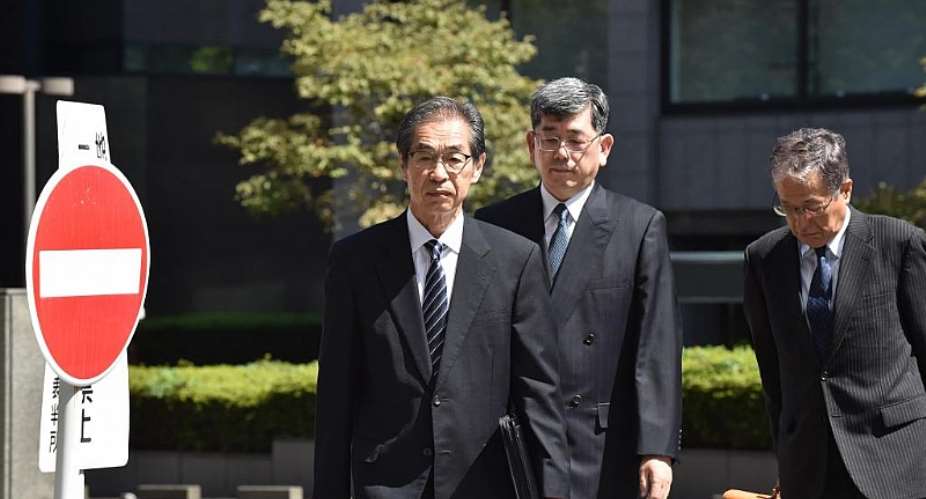A Japanese court has cleared three senior executives of professional negligence in the 2011 Fukushima nuclear meltdown. The case is a timely reminder of the debate surrounding nuclear safety in a world seeking alternative energy options.
The presiding judge, Kenichi Nagafuchi, ruled that the executives in question could not have predicted the scale of the massive tsunami that swamped the Fukushima nuclear plant on 11 March 2011 after a 9.0-magnitude undersea earthquake.
The three former executives were accused of professional negligence resulting in the deaths of 44 people, including patients who were forced to evacuate from a nearby hospital, as well as injuries suffered by 13 people including by Self-Defense Forces members as a result of hydrogen explosions.
Ex-Tepco Chairman Tsunehisa Katsumata, 79, and two former vice presidents, Ichiro Takekuro, 73, and Sakae Muto, 69 , faced up to five years in prison if convicted.
The men have apologised, but argued they could not have foreseen the disaster based on the available evidence and that they thought officials in the firm responsible for nuclear safety had taken appropriate measures.
Although no one was killed in the nuclear meltdown directly, the tsunami itself left 18,500 dead or missing.
Thousands still displaced
According to government data, more than 31,000 people who evacuated from their homes in Fukushima are still living outside the prefecture.
The decision is likely to be appealed, extending the legal wrangling over responsibility for the worst nuclear accident since Chernobyl, more than eight years after the disaster.
Separately from the criminal case, dozens of civil lawsuits have been filed against the government and TEPCO.
Some district courts have granted damages to local residents, ordering TEPCO and the government to pay.
In March 2017, a court for the first time ordered the government and TEPCO to pay a total of $340,000 dollars in compensation to residents who fled their homes after the nuclear disaster.
The following February, a Tokyo court ordered TEPCO to pay $10 million dollars in fresh damages to plaintiffs who fled their homes, an increase over what the operator had offered in compensation.
Waste disposal and clean up a huge challenge
Environmental rights groups such as Greenpeace continue to signal the dangers of waste storage and contamination.
Tepco has said it will take 40 years to locate and remove the melted fuel from the reactor cores, although some experts believe decommissioning could take longer.
The Japanese government has estimated that the total cost of dismantling the plant, decontaminating surrounding areas and compensating victims at about $200 billion dollars.
There is also the issue of more than a million tonnes of contaminated water stored at the site.
The Japanese environment minister recently proposed to release radioactive water into the ocean, but he was quickly shouted down by the Chief Cabinet Minister Yoshihide Suga, and asked to leave the cabinet in a reshuffle.
Suga, seen as Prime Minister Shinzo Abe's right-hand man, noted that an expert panel was still working on what to do with the water and was taking into account concerns from local fishermen, who fear it could destroy their livelihood.





 We’ll no longer tolerate your empty, unwarranted attacks – TUC blasts Prof Adei
We’ll no longer tolerate your empty, unwarranted attacks – TUC blasts Prof Adei
 Bawumia donates GHc200,000 to support Madina fire victims
Bawumia donates GHc200,000 to support Madina fire victims
 IMF to disburse US$360million third tranche to Ghana without creditors MoU
IMF to disburse US$360million third tranche to Ghana without creditors MoU
 Truck owner share insights into train collision incident
Truck owner share insights into train collision incident
 Paramount chief of Bassare Traditional Area passes on
Paramount chief of Bassare Traditional Area passes on
 Two teachers in court over alleged illegal possession of BECE papers
Two teachers in court over alleged illegal possession of BECE papers
 Sunyani: Victim allegedly shot by traditional warriors appeals for justice
Sunyani: Victim allegedly shot by traditional warriors appeals for justice
 Mahama vows to scrap teacher licensure exams, review Free SHS policy
Mahama vows to scrap teacher licensure exams, review Free SHS policy
 Government will replace burnt Madina shops with a new three-story, 120-store fac...
Government will replace burnt Madina shops with a new three-story, 120-store fac...
